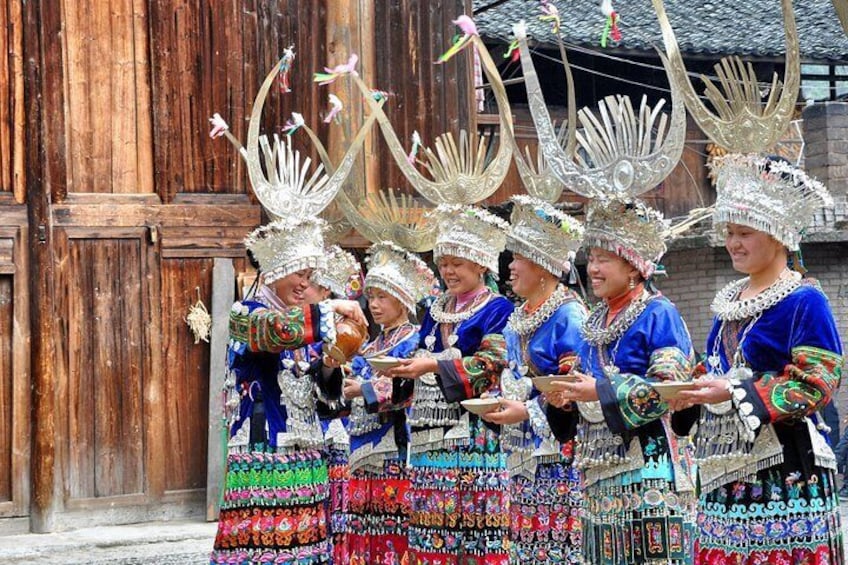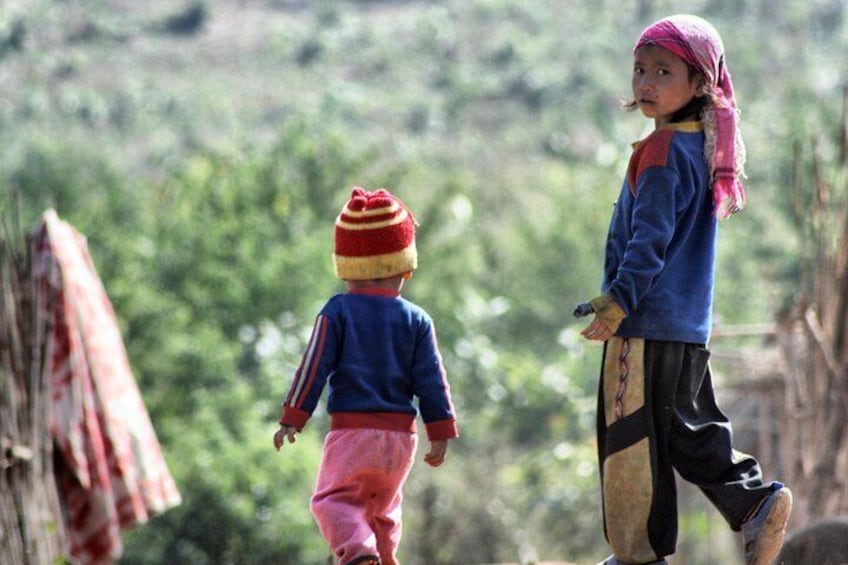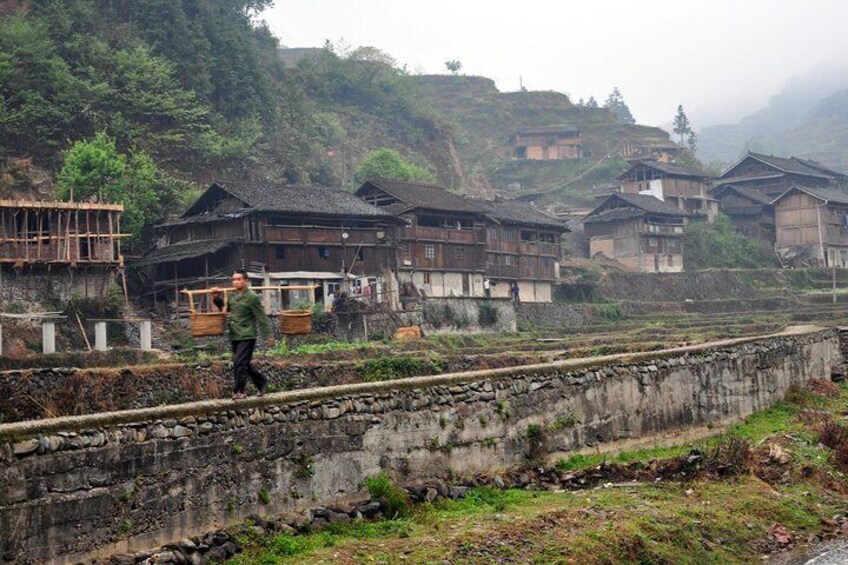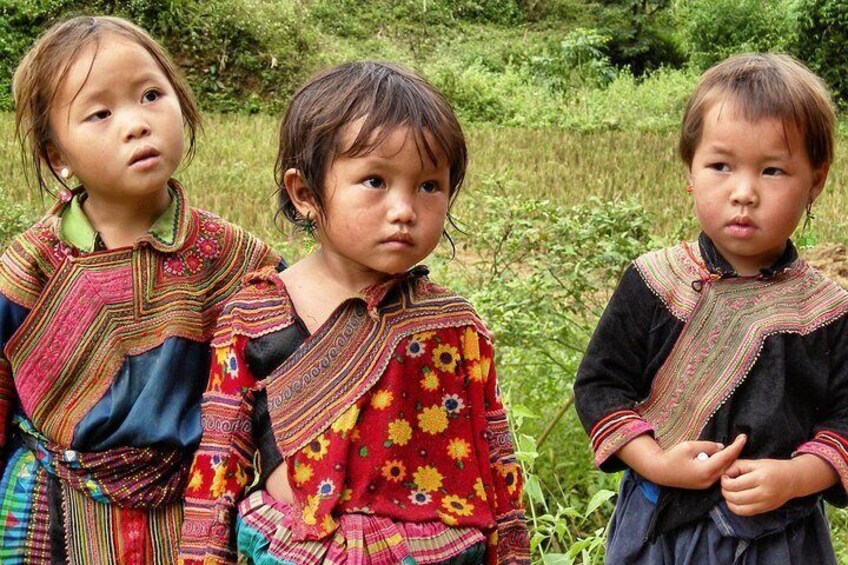List your propertySupportTrips Learn about Expedia Rewards
Learn about Expedia Rewards
Members save 10% or more on over 100,000 hotels worldwide when you’re signed in





Features
- 17d
- Mobile voucher
- Instant confirmation
Overview
A unique overland expedition to the “hill tribe land” that borders China, Vietnam and Laos. Despite political disputes and ever-changing borders in this region, a large number of local people have kept their ancient traditions, dialects and languages, colourful clothing, and unique ceremonies and practices. Join us on this thrilling expedition to some of Asia’s least travelled regions, and get an up-close encounter with this unique culture.
Activity location
- DianChi GouWu NvRen Jie
- Heping Village
- Kunming, Yunnan, China
Meeting/Redemption Point
- DianChi GouWu NvRen Jie
- Heping Village
- Kunming, Yunnan, China
Check availability
The Grand Tribal Tour
- 17d
- English
Pickup included
Language options: English
Starting time: 7:00 am
Price details
AU$7,843.90 x 1 AdultAU$7,843.90
Total
What's included, what's not
- Transfer by private A/C vehicle
- Entry fees for all sightseeing as mentioned on the programme
- 1 domestic flight Kunming/Guiyang
- English speaking guide for each area as per programme
- Accommodation at hotels selected including breakfast
- International travel to Kunming (China) and from Chiang Rai (Thailand)
- Travel insurance
- Chinese tourist visa
- Vietnamese tourist visa
- Lao tourist visa
- Excess luggage
- Service charge
- Expenses of personal nature (food and drinks beyond those provided, laundry, etc.)
- Anything not clearly mentioned in the programme
Know before you book
- Not recommended for travellers with spinal injuries
- Not recommended for pregnant travellers
- Not recommended for travellers with poor cardiovascular health
- Travellers should have at least a moderate level of physical fitness
Activity itinerary
Day 1: Arrival at Kunming
- 1 stop
- Meals: snacks
- Accommodation: Overnight in Kunming.
DianChi GouWu NvRen Jie
We meet at Kunming airport at 14:00, and drive to our hotel to check in and get a short rest from the long flight. If time permit (depending on tme of arrival in Kunming), we leave for the Western Hills. A stunning combination of flourishing vegetation and ancient temples, lying beside Dianchi Lake, the hills are a great place to roam and relax away from the bustling city. We visit the various temples, and enjoy the tranquil environment. In the evening, we visit the flower and birds market before proceeding to dinner.
Day 2: Kunming ✈ Guiyang - Huangguoshou waterfall
- 1 stop
- Meals: breakfast, snacks
- Accommodation: Overnight near the Huangguoshou Waterfall.
Guiyang
In the morning, we fly to Guiyang. On arrival, we take a short tour around town, walking along the promenade beside the Nanming River and visiting the tea-house at the heart of the Jiaxiu Tower. It was built in 1598 to inspire the locals to take exams with a view to becoming mandarins, and serve at the Imperial court during China’s feudal era. We then leave the city to visit the Tunbao people. Generally considered as a minority, the Tunbao are actually Han Chinese who came to this area as soldiers sent to protect the borders of the then emerging Chinese empire. We visit their stone village, and learn about their interesting traditions and history. We continue to the Dragon’s Palace and take a boat ride in an amazing cave, full of dramatically lit stalactites. In the afternoon, we head towards the famous Huangguoshou Waterfall.
Day 3: Huangguoshou - Xingyi
- 1 stop
- Meals: breakfast, snacks
- Accommodation: Overnight in Xingyi.
Tianxing Bridge Scenic Resort
Our first visit in the morning is Tianxing Bridge Scenic Area, which is located 7 kilometres downstream of Huangguoshu Waterfall, it’s a natural bonsai museum with combination of stones, trees and waters. The image of the Huangguoshou Waterfall decorates Chinese restaurants throughout the world. It symbolises the stamina and strength of the Chinese people through the ages, and is a source of great national pride to them all. We take the tour around the falls and through the cave behind them. From here, we continue our trip westwards. We visit villages of the Buyi people and the Miao people. If time permits, we take a walk through these villages, and seek an opportunity to be invited into a local home, for a first up-close encounter with them. Given how hospitable these people are, it is more than likely we’ll be invited for an afternoon drink before proceeding to Xingyi.
Day 4: Xingyi
- 1 stop
- Meals: breakfast, snacks
- Accommodation: Overnight in Xingyi.
Xingyi
We enjoy a few hours of active exploration in Maling Gorge, which has been described as the ‘most dramatic gorge in all of Asia’. We begin the day with a two-hour walk through the gorge and enjoy the amazing rock formations along the slopes. In the afternoon, we make a tour of the Ten Thousand Hills Forest before taking back to Xingyi.
Day 5: Xingyi - Shilin
- 1 stop
- Meals: breakfast, snacks
- Accommodation: Overnight in Shilin.
Stone Forest
Leaving Xingyi, we drive through Guizhou’s back roads and enjoy the beautiful countryside scenery. From time to time we stop for short walks through the Miao villages along the way. A Chinese proverb says that ‘one won’t find in Guizhou three kilometres of straight road, three days without rain, and three coins in one pocket.’ Indeed, Guizhou is one of the poorest provinces in China and infrastructure is still somewhat lacking here. Leaving Guizhou, we enter the province of Yunnan and head directly for the Stone Forest. Many legends tell the storey of the creation of this unique geological phenomenon, but only seeing it for yourself can reveal the true sense of such majestic landscapes. During our visit to the “forest”, we meet the people of the Sani, an ethnic group living in the area, who wear colourful embroidered traditional clothing. The Sani are known for their heart-stirring singing and dancing.
Day 6: Shilin - Jianshui
- 1 stop
- Meals: breakfast, snacks
- Accommodation: Overnight in Jianshui.
Zhu's Family Garden (Zhu Jia Huayuan)
Today we have a long drive to Jianshui. On arrival in the afternoon, we visit the Confucius Temple in the heart of the city. The temple served as a school in which young candidates studied for the Imperial exams, the one thing which could have changed the life of a boy born to a family of peasants, to a life of a mandarin, an officer at the Imperial court. We then continue on a visit to the Zhu Family Garden. The garden, and the estate in which it is located, was built and owned by local family of traders. During an uprising at the very beginning of the 20th century, the Zhu family had to flee to Japan. Upon their return, after five years in exile, they have built this impressive estate. Today it offers an insight into the life of high-society during the Qing Dynasty. In the evening we take a walk along the small town’s pedestrian street to the City Wall, and enjoy a free evening in the lively street.
Day 7: Jianshui - Yuanyang
- 1 stop
- Meals: breakfast, snacks
- Accommodation: Overnight in Yuanyang.
Yuanyang Rice Terraces
Once again, we have a long drive ahead of us. Our first stop is at Tuan Shan, a small village from the feudal era, which was once ruled by a local warlord. The village has been remarkably well preserved, but the faces of many of the figures decorating the village buildings were ripped off during the Culture Revolution, as they symbolised ethics and perceptions which were banned by the socialist revolutionists. Thus, this small village provides an interesting perspective over two very different, yet very significant eras in Chinese history. We then continue south and stop to meet the Hui people, a Muslim community that has lived in the south of China since the times of the great trading routes that crossed the Muslim states of central Asia. We visit their mosques and try to meet key figures in this community, to hear how they have preserved their ancient traditions in modern-day China. From there we continue on our way down south, stopping en route at a very interesting cave where the local people practice Buddhism combined with the worship of ancestral spirits, a common religious practice throughout East Asia, often referred to as “the religion with no name”. Back in our vehicle, we drive up the steep slopes towards Yuanyang.
Day 8: Yuanyang
- 1 stop
- Meals: breakfast, snacks
- Accommodation: In the evening, we drive back to Yuanyang where we spend another night.
Laohuzui Waterfall
Today we drive to the end of Yuanyang prefecture to visit the weekly local market there. In this market, people of the various ethnic groups in the area, among them Dai, Miao, Zhuang, and the Yi and Haan People, meet once a week to exchange goods, usually handicrafts and agricultural produce. Even dogs are bought and sold here, and not necessarily to become family pets… We then continue to explore the area, visiting villages of the various minorities to see the traditional architecture, and in late afternoon we drive to Laohuzui to enjoy the beautiful and breathtaking sunset over the rice terraces.
Note: Minority market happens in certain days of the months. Visiting the market depending on the actual travel dates.
Day 9: Yuanyang - Sapa (Vietnam)
- 1 stop
- Meals: breakfast, snacks
- Accommodation: We reach Sapa in the late evening and spend the night there.
Sapa Market
After two nights in Yuanyang, we set off for a drive to Vietnam. We enjoy the marvellous landscapes of southern Yunnan and driving as fast as we can, along the course of the Red River, soon arrive to the small border town of Hekou. After going through the necessary formalities at the Chinese and Vietnamese border posts, we find ourselves in Lao Cai, the provincial capital on the Vietnamese side. We board our coach and drive to Sapa. Prior to 1912, when the French built a sanatorium for sick officers, the area was solely inhabited by hill tribes, mainly the H’mong, the Yao, the Tay, and the Giay. Nestling at the foot of Fansipan, Vietnam’s highest peak, the Sapa region enjoys a very agreeable climate, unlike the Vietnamese lowlands which are hot and humid. This northern area attracted French people of all walks of life, among them missionaries and biologists. Over time, the growing presence of the French army stabilised the political borders with neighbouring China, which made Sapa into a major trading city. We reach Sapa in the late evening and go for a stroll in the lively high street.
Day 10: Sapa
- 1 stop
- Meals: breakfast
- Accommodation: Overnight in Sapa.
Sapa Market
After breakfast at the hotel, we drive to one of the villages surrounding Sapa, where a weekly tribal market takes place. The locals, from different ethnic groups, gather to trade mostly agricultural produce but also a variety of handicrafts, and to purchase their own supplies. This is a unique opportunity to see in one place a great variety of ethnic groups, some of whom live up in the mountains where it is nearly impossible to visit them. We walk through the bustling market amid the colourful booths, and see the locals as they sit for a cup of tea and exchange information on who has married whom, whose child has left for the city, and other such important items of news. In the afternoon, we leave the market and return to Sapa.
Day 11: Sapa - Lai Chau - Dien Bien Phu
- 1 stop
- Meals: breakfast, lunch, snacks
- Accommodation: Overnight in a local hotel in Lai Chau Province.
Dien Bien Phu
We leave Sapa and drive to Dien Bien Phu on a winding road through magnificent mountain passes. En route, we stop at villages of various hill tribes such as the Lu, the Red H’mong, the Green H’mong, and many others. Living away from the fast-developing centers of Vietnam, these minorities have kept their traditional clothing and practices for hundreds of years. Our two-days’ journey ends at Dien Bien Phu, which has played a significant role in the region’s history, and is remembered as the place where the revolution against the French colonial regime started. We visit the regional museum, which tells the storey of Dien Bien Phu’s battle against the French and their allies. From there we continue to Hill A1, which remained one of the most strategic points throughout the period of conflict.
Day 12: Sapa - Lai Chau - Dien Bien Phu
- 1 stop
- Meals: breakfast, lunch, snacks
- Accommodation: Overnight in Dien Bien Phu.
Dien Bien Phu
We leave Sapa and drive to Dien Bien Phu on a winding road through magnificent mountain passes. En route, we stop at villages of various hill tribes such as the Lu, the Red H’mong, the Green H’mong, and many others. Living away from the fast-developing centers of Vietnam, these minorities have kept their traditional clothing and practices for hundreds of years. Our two-days’ journey ends at Dien Bien Phu, which has played a significant role in the region’s history, and is remembered as the place where the revolution against the French colonial regime started. We visit the regional museum, which tells the storey of Dien Bien Phu’s battle against the French and their allies. From there we continue to Hill A1, which remained one of the most strategic points throughout the period of conflict.
Day 13: Dien Bien Phu - Nong Kiaw (Laos)
- 1 stop
- Meals: breakfast, lunch, snacks
- Accommodation: Overnight in bungalows in Nong Kiaw.
Viewpoint Nong Khiaw/Ban Sop Houn
Early in the morning, we drive for an hour from Dien Bien Phu to the Vietnam–Laos border. After completing the formalities on the Vietnamese side, we hike for three kilometres through the dense rainforest to the Lao border post. We then take a two hour ride down the mountain towards the Ou River. On reaching the small town of Muang Khua, we board a boat and travel down the Ou River to Nong Kiaw. The river trip gives us a unique perspective on life in Laos, and especially on the life of those communities inhabiting the river banks and living off the river. For them, it is the main source of water for all purposes, a place for the cattle to drink, and, of course, a rich source of all kinds of fish. We may see children washing in the river, fishermen laying their nets, and traders in their small boats paddling from one village to the other, offering their goods for sale to the locals.
Day 14: Nong Kiaw - Muang Sing
- 1 stop
- Meals: breakfast, lunch, snacks
- Accommodation: Overnight in bungalows at Muang Sing.
Muang Sing Village Herbal Sauna
Back on the road, we drive to Luang Namtha. Along the way, we stop from time to time at the small villages on the road, visit the small shrines, and come across some minority groups such as the Khamu and the Black H’mong. We will learn about how these ancient tribes are blending into Lao society, and how the new roads that are being built have affected their way of life. In the afternoon, we drive to Ban Nam Di. We take a short walk to the small waterfall there and, after a short time relaxing by the clear water, we move on to visit a village of the Lanten people, who originated from China (and who still write in Chinese), and are famous for their handmade paper. After a short drive, we reach Muang Sing, a small town on the Laos–China border. This town is the administrative centre for numerous hill-tribe settlements in the vast plains and hills surrounding it.
Day 15: Muang Sing
- 1 stop
- Meals: breakfast, snacks, lunch
- Accommodation: In the evening we drive back to Muang Sing for a second night.
Muang Sing Village Herbal Sauna
Today we enjoy a full days hike to the remote areas of Muang Sing, where the communities have preserved their traditional way of life for centuries. The majority of the people here do not speak Lao, the official language, but only their own dialects. We start the day with a ride in local ‘jumbo’ vehicles, and continue on foot. We stop for a picnic lunch on the banks of a cool stream, and continue to visit some of the villages in the area. During our hike we will meet the Tai Lu, Lu Lu, Yahoo, Khamu and Akha people.
Day 16: Muang Sing - Chiang Rai (Thailand)
- 1 stop
- Meals: breakfast, snacks
- Accommodation: Overnight in a resort in Chiang Rai.
Chiang Rai Beach
The history of Muang Sing is no less exciting than that of the hill tribes who inhabit the area. Until the 19th century, the town was ruled by the Thai prince of Chiang Khong. It was then conquered by the Nam people and became part of French Indochina until 1954. After the French defeat at Dien Bien Phu in 1954, the region became a no-man’s-land, and the Chinese, Vietnamese, Americans, and of course the Lao, fought to gain control over it. This morning we visit the last morning market of our trip, again a great opportunity to meet people of various ethnic groups all in the same place. We then pay a visit to the local museum to see exhibitions on the intervention of Air America in the region during the Vietnam War, and on the different ethnic groups inhabiting the surrounding area. Leaving Muang Sing, we drive along the road recently built by the Chinese to allow the transport of logs from northern Thailand to China on our way to Houei Xay, the quiet border town, and after dealing with the immigration formalities, we board our vehicle, and drive to the city of Chiang Rai, Thailand.
Day 17: Departure from Thailand
- 1 stop
- Meals: breakfast
- Accommodation: Not included
Mae Fah Luang - Chiang Rai International Airport (CEI)
After breakfast we drive to Chiang Rai airport, from there we begin our long journey back home.
Location
Activity location
- DianChi GouWu NvRen Jie
- Heping Village
- Kunming, Yunnan, China
Meeting/Redemption Point
- DianChi GouWu NvRen Jie
- Heping Village
- Kunming, Yunnan, China
Best Deals on Things to Do
Experience the wonders of the world up close with great deals on things to do near and far. Expedia offers one-of-a-kind activities that allow you to explore Kunming your way. Whether you love nature, culture, food or a bit of adventure, we have the perfect activity for you.
Top experiences in Kunming
With so many activities in Kunming, planning the perfect day out may seem like a daunting task. Expedia is here to take the hassle out of finding the best attractions, tours and activities in Kunming. Families, couples and business travellers can all find the perfect activity in Kunming to create life-long memories with the help of Expedia.